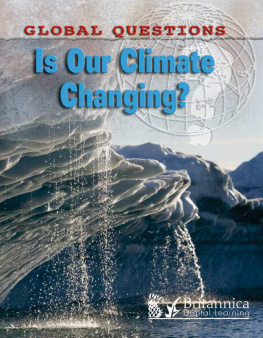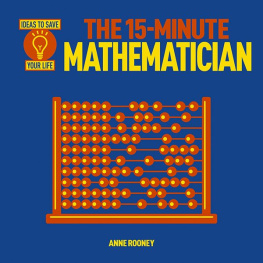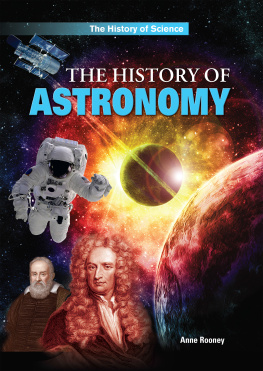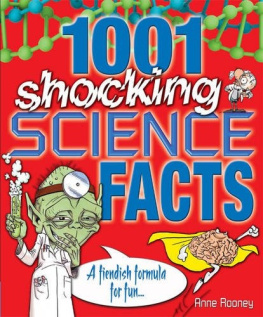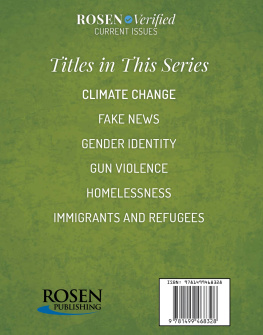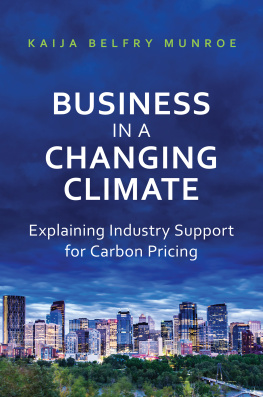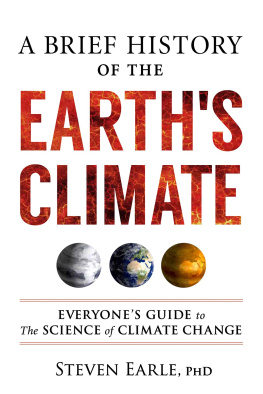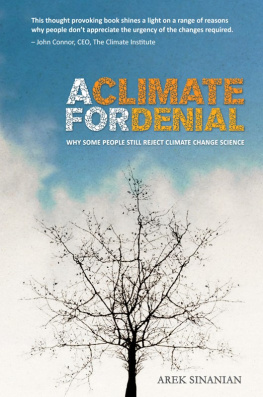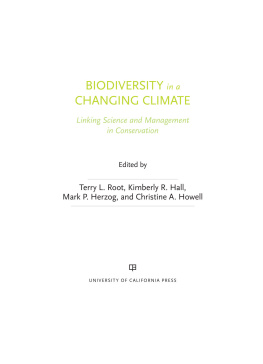Anne Rooney - Is Our Climate Changing?
Here you can read online Anne Rooney - Is Our Climate Changing? full text of the book (entire story) in english for free. Download pdf and epub, get meaning, cover and reviews about this ebook. year: 2012, publisher: Britannica Digital Learning, genre: Children. Description of the work, (preface) as well as reviews are available. Best literature library LitArk.com created for fans of good reading and offers a wide selection of genres:
Romance novel
Science fiction
Adventure
Detective
Science
History
Home and family
Prose
Art
Politics
Computer
Non-fiction
Religion
Business
Children
Humor
Choose a favorite category and find really read worthwhile books. Enjoy immersion in the world of imagination, feel the emotions of the characters or learn something new for yourself, make an fascinating discovery.
- Book:Is Our Climate Changing?
- Author:
- Publisher:Britannica Digital Learning
- Genre:
- Year:2012
- Rating:3 / 5
- Favourites:Add to favourites
- Your mark:
- 60
- 1
- 2
- 3
- 4
- 5
Is Our Climate Changing?: summary, description and annotation
We offer to read an annotation, description, summary or preface (depends on what the author of the book "Is Our Climate Changing?" wrote himself). If you haven't found the necessary information about the book — write in the comments, we will try to find it.
Is Our Climate Changing? looks at the complex issues surrounding climate change.
Is Our Climate Changing? — read online for free the complete book (whole text) full work
Below is the text of the book, divided by pages. System saving the place of the last page read, allows you to conveniently read the book "Is Our Climate Changing?" online for free, without having to search again every time where you left off. Put a bookmark, and you can go to the page where you finished reading at any time.
Font size:
Interval:
Bookmark:


E-book published in 2015 by Encyclopdia Britannica, Inc., in association with Arcturus Publishing Limited, 26/27 Bickels Yard, 151-153 Bermondsey Street, London SE1 3HA. Britannica, Encyclopdia Britannica, and the Thistle logo are registered trademarks of Encyclopdia Britannica, Inc.
ISBN 978-1-62513-324-3 (e-book)
This edition first published by Arcturus Publishing
Distributed by Black Rabbit Books
P.O. Box 3263
Mankato
Minnesota MN 56002
Copyright 2008 Arcturus Publishing Limited
All rights reserved.
Library of Congress Cataloging-in-Publication Data
Rooney, Anne.
Is our climate changing? / Anne Rooney.
p. cm. -- (Global questions)
1. Climatic changes--Juvenile literature. I. Title.
QC981.8.C5R685 2009
551.6--dc22
2008016663
9 8 7 6 5 4 3 2
The right of Anne Rooney to be identified as the author of this work has been asserted by him/her in accordance with the Copyright, Designs and Patents Act 1988.
Series concept: Alex Woolf
Editor: Nicola Barber
Designer: Ian Winton
Illustrations: Stefan Chabluk
Picture credits:
The Bridgeman Art Library: 12 (Private Collection).
Corbis: cover and 7 (Paul Souders), 9 (NASA/Roger Ressmeyer), 10 (Tomas Bravo/epa), 11 (Martin Ruetschi/Keystone), 13 (Francis Latreille), 17 (Ryan Pyle), 20 (Liu Liqun), 23 (Andrea Merola/epa), 25 (CDC/PHIL), 26 (Bettmann), 31 (Michael Macor/San Francisco Chronicle), 33 (Saipul Siagiancheers/handout/epa), 35 (Fritz Hoffmann), 36 (Ashley Cooper), 41 (Gideon Mendel), 43 (Jacques Langevin/Corbis Sygma).
NASA: 40 (Christopher Shuman, ICESat Deputy Project Scientist, Goddard Space Flight Center. Artists rendering Greg Shirah and Alex Kekesi, Scientific Visualizations Studio, Goddard Space Flight Center).
Science Photo Library: 8, 18 (Gary Hincks), 14 (British Antarctic Survey), 29 (Tony Craddock), 30 (US Department of Energy), 37 (Sinclair Stammers).
Shutterstock: title page and 27 (Jan Martin Will), 38 (Markus Gann).
Every attempt has been made to clear copyright. Should there be any inadvertent omission, please apply to the copyright holder for rectification.
Contents
Spring is coming earlier in some parts of the world; the ice sheets are melting; temperatures are rising. Our planet is getting warmer. What does all this mean, and does it matter? Most scientists believe that human activity is changing the climate on earth and that this change may have serious and even catastrophic effects. They believe that we must all think about the way we live to try to halt climate change before the damage becomes irreversible. Some other people think either that there is no significant change or that human activity is not the cause. It is a complex issue, yet it is one that affects all of us and that we cant afford to ignore.
Expert View
Scientists believe it is 90 percent certain that humans have affected the climate:
It is extremely likely that human activities have exerted a substantial net warming influence on climate since 1750.
Intergovernmental Panel on Climate Change, 2007
Is our climate changing?
All scientists who study the climate agree that there have been changes in the worlds climate over the last hundred years. In some parts of the world, people have kept temperature records for several hundred years. These records show that on average, the temperature rose 1.5 F (0.9 C) between 1880 and 2012. This may not sound like much, but it is enough to make some very real differences, including:
Melting ice The North and South poles and the areas around them the Arctic and Antarctica have vast ice sheets that stretch for hundreds of miles. Yet over the last few years, these ice sheets have shrunk as rising temperatures have caused them to melt. Glaciers (frozen rivers) in mountainous areas all over earth are also melting.
Melting permafrost Permafrost is a layer of permanently frozen ground that is found in very cold regions. Such ground may not always be covered with snow or ice, but normally it never melts completely because the average temperatures in these regions are so low. In recent times, permafrost has been melting in some areas for the first time in centuries.
Earlier seasons The arrival of spring is indicated by natural events such as birds nesting and flowers blooming. In many places, these events are happening earlier than usual because the temperatures that trigger them occur earlier in the year.
Moving plants and animals Plants and animals are being found in new areas as the climate changes. Some places are becoming too hot, too dry, or too wet to sustain particular animals or plants. Other regions have become warmer, offering the ideal climate for new species.

Water pours from a melting iceberg in Disko Bay, Greenland.
The years 1998, 2003, 2005, 2010, 2013, and 2014 were the hottest on record. Temperatures have been recorded in Britain since 1659. The year 2014 saw the highest average summer temperatures since global records were kept.
Why the climate changes
Climate scientists believe that the changes we are seeing now are the result of greenhouse gases building up in the atmosphere. Greenhouse gases are a group of gases that collect in a layer at the top of the atmosphere and act like an insulating blanket, keeping heat close to earth. They are called greenhouse gases because they behave like the glass walls and roof of a greenhouse they trap heat to keep earth warm. Carbon dioxide, methane, and water vapor are all examples of greenhouse gases.
Hotter and hotter
The earth is heated by the sun. About one-third of the heat energy from the sun is reflected straight back into space by clouds and dust in the atmosphere; about one-fifth warms up the atmosphere around earth, and about half actually reaches the surface of earth. Some of the heat energy that reaches earth is reflected back particularly from the polar ice caps and up into the atmosphere again. Some of this reflected heat passes back through the atmosphere and into space, but some is trapped by clouds and greenhouse gases. The layer of greenhouse gases reduces the amount of reflected heat that can pass from the earth to space. Instead, the heat is reflected back from the blanket of gases to the surface once more, warming earth again.

Although some of the heat from the sun is reflected back into space, some is trapped by the layer of greenhouse gases and remains to warm the surface of the earth.
Too much atmosphere and too little
The earths atmosphere has supported life for millions of years. Near neighbors of earth in the solar system show what its like to have too little atmosphere or too thick a layer of greenhouse gases. They are not planets on which humans could live. Venus is earths nearest neighbor in space. It has a dense atmosphere that is 94 percent carbon dioxide, producing an extreme greenhouse effect. This atmosphere traps heat near the planets surface, producing scalding temperatures of around 867 F (464 C).

Font size:
Interval:
Bookmark:
Similar books «Is Our Climate Changing?»
Look at similar books to Is Our Climate Changing?. We have selected literature similar in name and meaning in the hope of providing readers with more options to find new, interesting, not yet read works.
Discussion, reviews of the book Is Our Climate Changing? and just readers' own opinions. Leave your comments, write what you think about the work, its meaning or the main characters. Specify what exactly you liked and what you didn't like, and why you think so.

